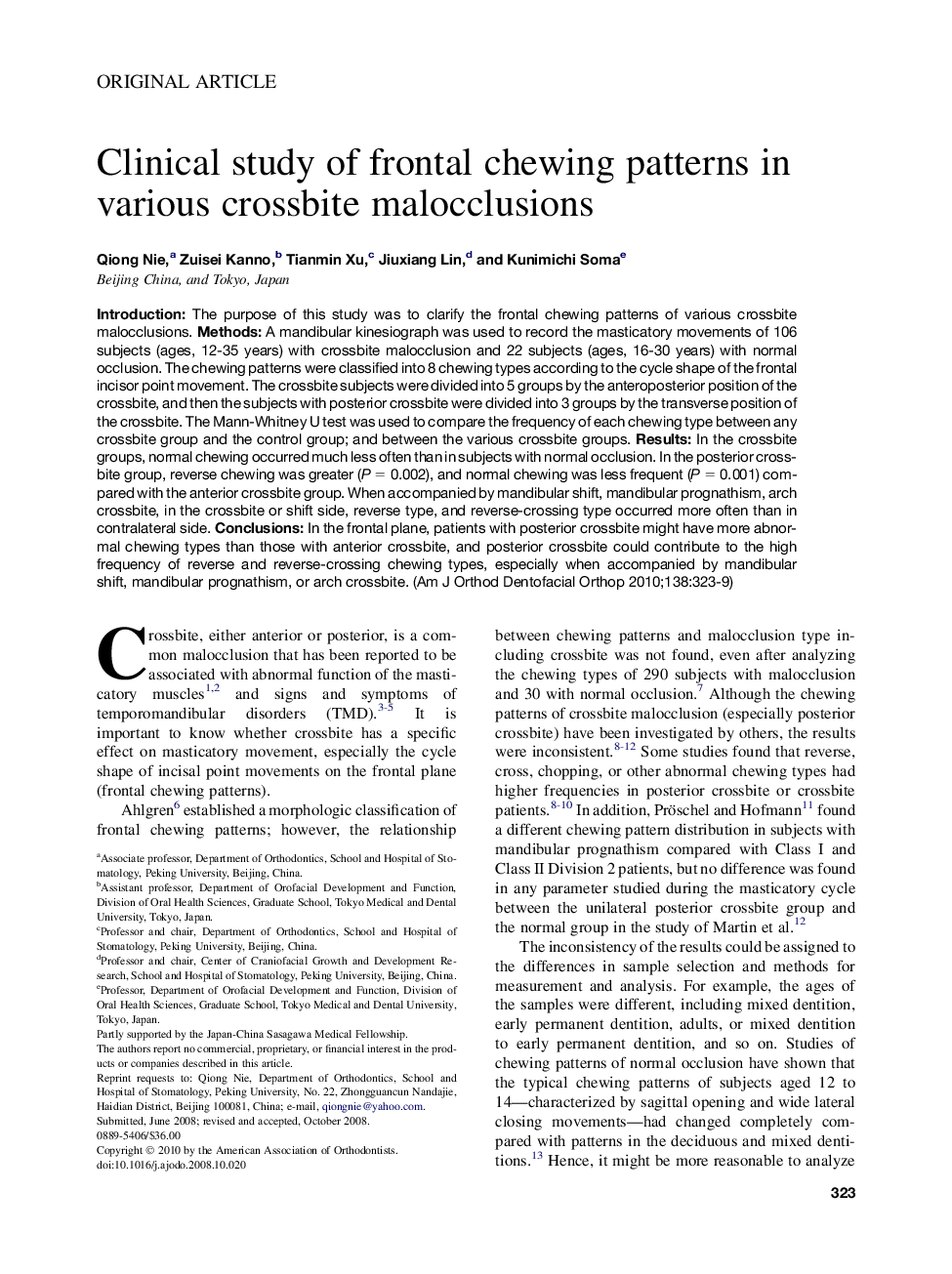| Article ID | Journal | Published Year | Pages | File Type |
|---|---|---|---|---|
| 3117571 | American Journal of Orthodontics and Dentofacial Orthopedics | 2010 | 7 Pages |
IntroductionThe purpose of this study was to clarify the frontal chewing patterns of various crossbite malocclusions.MethodsA mandibular kinesiograph was used to record the masticatory movements of 106 subjects (ages, 12-35 years) with crossbite malocclusion and 22 subjects (ages, 16-30 years) with normal occlusion. The chewing patterns were classified into 8 chewing types according to the cycle shape of the frontal incisor point movement. The crossbite subjects were divided into 5 groups by the anteroposterior position of the crossbite, and then the subjects with posterior crossbite were divided into 3 groups by the transverse position of the crossbite. The Mann-Whitney U test was used to compare the frequency of each chewing type between any crossbite group and the control group; and between the various crossbite groups.ResultsIn the crossbite groups, normal chewing occurred much less often than in subjects with normal occlusion. In the posterior crossbite group, reverse chewing was greater (P = 0.002), and normal chewing was less frequent (P = 0.001) compared with the anterior crossbite group. When accompanied by mandibular shift, mandibular prognathism, arch crossbite, in the crossbite or shift side, reverse type, and reverse-crossing type occurred more often than in contralateral side.ConclusionsIn the frontal plane, patients with posterior crossbite might have more abnormal chewing types than those with anterior crossbite, and posterior crossbite could contribute to the high frequency of reverse and reverse-crossing chewing types, especially when accompanied by mandibular shift, mandibular prognathism, or arch crossbite.
